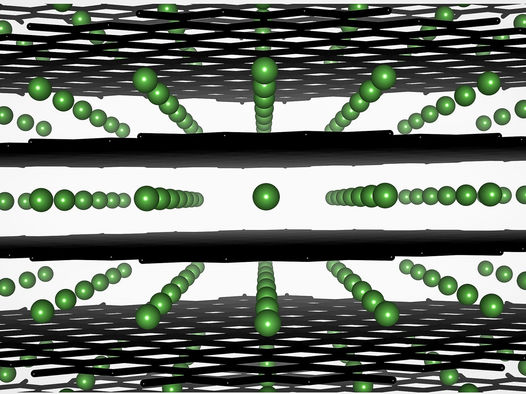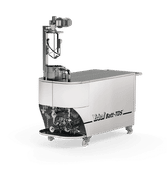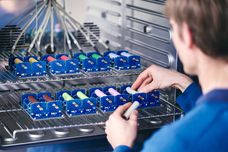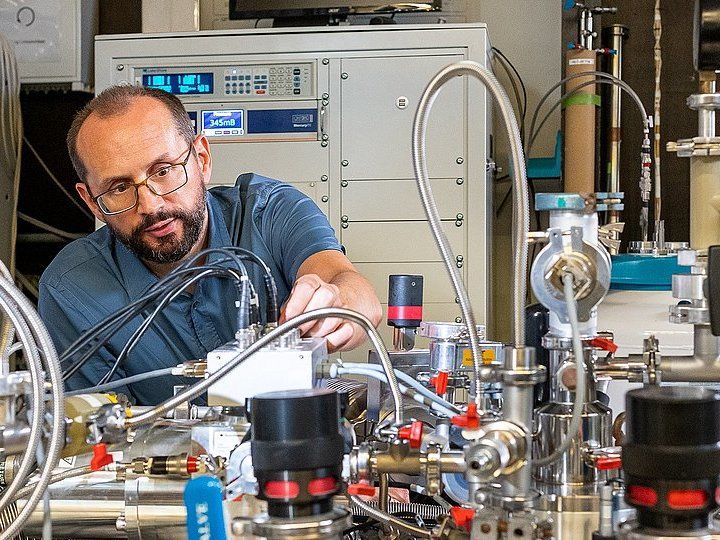Why batteries can’t charge in minutes
Researchers find new issue complicating fast charging
Advertisement
Researchers find new issue complicating fast charging. Haste makes waste, as the saying goes. Such a maxim may be especially true of batteries, thanks to a new study that seeks to identify the reasons that cause the performance of fast charged lithium-ion batteries to degrade in electric vehicles.

This illustration shows intercalation of lithium ions (green) in a graphite anode.
Image by Argonne National Laboratory
In new research from the U.S. Department of Energy’s (DOE) Argonne National Laboratory, scientists have found interesting chemical behavior of one of the battery’s two terminals as the battery is charged and discharged.
Lithium-ion batteries contain both a positively charged cathode and a negatively charged anode, which are separated by a material called an electrolyte that moves lithium ions between them. The anode in these batteries is typically made out of graphite — the same material found in many pencils. In lithium-ion batteries, however, the graphite is assembled out of small particles. Inside these particles, the lithium ions can insert themselves in a process called intercalation. When intercalation happens properly, the battery can successfully charge and discharge.
When a battery is charged too quickly, however, intercalation becomes a trickier business. Instead of smoothly getting into the graphite, the lithium ions tend to aggregate on top of the anode’s surface, resulting in a “plating” effect that can cause terminal damage — no pun intended — to a battery.
“Plating is one of the main causes of impaired battery performance during fast charging,” said Argonne battery scientist Daniel Abraham, an author of the study. “As we charged the battery quickly, we found that in addition to the plating on the anode surface there was a build up of reaction products inside the electrode pores.” As a result, the anode itself undergoes some degree of irreversible expansion, impairing battery performance.
Using a technique called scanning electron nanodiffraction, Abraham and his colleagues from the University of Illinois Urbana-Champaign observed another notable change to the graphite particles. At the atomic level, the lattice of graphite atoms at the particle edges becomes distorted because of the repeated fast charging, hindering the intercalation process. “Basically, what we see is that the atomic network in the graphite becomes warped, and this prevents lithium ions from finding their ‘home’ inside the particles — instead, they plate on the particles,” he said.
“The faster we charge our battery, the more atomically disordered the anode will become, which will ultimately prevent the lithium ions from being able to move back and forth,” Abraham said. “The key is to find ways to either prevent this loss of organization or to somehow modify the graphite particles so that the lithium ions can intercalate more efficiently.”
Original publication
Other news from the department science
These products might interest you
Most read news
More news from our other portals
See the theme worlds for related content
Topic World Battery Technology
The topic world Battery Technology combines relevant knowledge in a unique way. Here you will find everything about suppliers and their products, webinars, white papers, catalogs and brochures.

Topic World Battery Technology
The topic world Battery Technology combines relevant knowledge in a unique way. Here you will find everything about suppliers and their products, webinars, white papers, catalogs and brochures.



























































